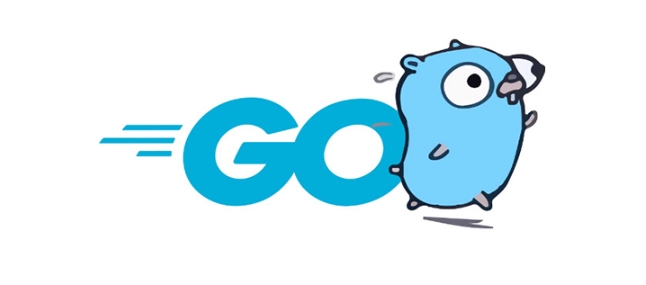The most common cause of Go's embed path issues is incorrect relative paths or typos, with solutions involving verifying file locations, checking build tags, and inspecting embedded content; 1. Ensure paths in //go:embed are relative to the Go source file, not the module root; 2. Verify file and directory names match exactly, including case sensitivity; 3. Use fs.WalkDir on embed.FS at runtime to confirm files are embedded; 4. Check for build constraints excluding the file by running go list -f '{{.EmbedPatterns}}' .; 5. Avoid invalid patterns like .. or absolute paths; 6. Heed compile-time errors for missing files; 7. Clean the build cache with go clean and rebuild to resolve stale behavior, ensuring symlinks are not used since they are not followed by embed.

Go's embed package is powerful, but path issues can be tricky—especially when files aren't found at compile time or runtime. Here’s how to effectively debug and resolve embed path problems.

1. Understand How embed Resolves Paths
The //go:embed directive uses relative paths from the Go source file, not from the project root or module root.
//go:embed templates/* var tmplFS embed.FS
This looks for a templates/ directory in the same directory as the .go file containing the directive.

? Common mistake: Assuming paths are relative to go.mod or main.go. They’re not.
? Fix: Always double-check the physical location of your Go file and ensure the embedded path is correct relative to it.

2. Check File and Directory Structure
Ensure the files actually exist and are spelled correctly (including case sensitivity).
For example:
project/
├── main.go
└── templates/
└── index.htmlIf main.go contains:
//go:embed templates/index.html var content string
But templates/ is actually named Templates/ (capital T), it will fail on case-sensitive systems.
? Debug tip: Use ls or find to verify:
ls -R . # Check actual directory and file names
Also ensure:
- No
.gitignoreor build scripts are deleting assets - You’re not embedding files outside the module or in ignored directories
3. Use embed.FS fs.WalkDir to Inspect Embedded Content
Instead of assuming the FS is populated, inspect it at runtime:
package main
import (
"embed"
"fmt"
"io/fs"
)
//go:embed templates/*
var tmplFS embed.FS
func main() {
err := fs.WalkDir(tmplFS, ".", func(path string, d fs.DirEntry, err error) error {
if err != nil {
return err
}
fmt.Println("Embedded:", path)
return nil
})
if err != nil {
panic(err)
}
}If this prints nothing, your files aren’t being embedded.
? This helps confirm whether the issue is at embed time (files not included) or access time (wrong path used when reading).
4. Check for Build Constraints or Multiple Files
If your .go file has build tags (e.g., //go:build linux), the //go:embed directive may be ignored in other environments.
Also, if you have multiple files with //go:embed, ensure they’re in the right package and not excluded by build conditions.
? Debug tip: Run:
go list -f '{{.EmbedPatterns}}' .This shows what patterns go:embed is trying to match in the current package.
If it prints [], your //go:embed directive isn’t being recognized—likely due to syntax error or build tag issues.
5. Avoid Invalid Patterns
//go:embed has strict rules:
- No
..in paths (//go:embed ../shared?) - No absolute paths
- Globs like
*and**are limited (no**for recursive)
? Use only relative paths within the same or subdirectories:
//go:embed assets/* var assets embed.FS // ?
? This will fail silently or with a compile error:
//go:embed ../../shared/*
6. Compiler Errors Are Your Friend
If the path is invalid or files don’t exist, Go will usually give a compile-time error:
pattern ../../config: no matching files
But if you’re using embed.FS, sometimes the FS is just empty—no error, just silence.
? So: If you expect files but get an empty FS, go back and verify the path at compile time.
7. IDE and Cache Gotchas
Some editors or tools (like GoLand or VS Code with Go plugins) may not reflect embed changes immediately.
? Try:
go clean go build
Clears build cache and forces re-embedding.
Also, avoid symlinks—Go's embed doesn’t follow them.
Summary Checklist
- [ ] Path is relative to the
.gofile, not module root - [ ] File/directory names match exactly (case-sensitive)
- [ ] No
..or absolute paths - [ ] No build tags excluding the file
- [ ] Run
go list -f '{{.EmbedPatterns}}' .to verify patterns - [ ] Use
fs.WalkDirto inspect embedded content - [ ] Clean and rebuild if behavior seems stale
Basically, most embed path issues come down to incorrect relative paths or typos. The tooling is strict but predictable—once you align the physical layout with the expected embed context, it works reliably.
The above is the detailed content of How to debug go embed path issues?. For more information, please follow other related articles on the PHP Chinese website!

Hot AI Tools

Undress AI Tool
Undress images for free

Undresser.AI Undress
AI-powered app for creating realistic nude photos

AI Clothes Remover
Online AI tool for removing clothes from photos.

Clothoff.io
AI clothes remover

Video Face Swap
Swap faces in any video effortlessly with our completely free AI face swap tool!

Hot Article

Hot Tools

Notepad++7.3.1
Easy-to-use and free code editor

SublimeText3 Chinese version
Chinese version, very easy to use

Zend Studio 13.0.1
Powerful PHP integrated development environment

Dreamweaver CS6
Visual web development tools

SublimeText3 Mac version
God-level code editing software (SublimeText3)

Hot Topics
 Strategies for Integrating Golang Services with Existing Python Infrastructure
Jul 02, 2025 pm 04:39 PM
Strategies for Integrating Golang Services with Existing Python Infrastructure
Jul 02, 2025 pm 04:39 PM
TointegrateGolangserviceswithexistingPythoninfrastructure,useRESTAPIsorgRPCforinter-servicecommunication,allowingGoandPythonappstointeractseamlesslythroughstandardizedprotocols.1.UseRESTAPIs(viaframeworkslikeGininGoandFlaskinPython)orgRPC(withProtoco
 Understanding the Performance Differences Between Golang and Python for Web APIs
Jul 03, 2025 am 02:40 AM
Understanding the Performance Differences Between Golang and Python for Web APIs
Jul 03, 2025 am 02:40 AM
Golangofferssuperiorperformance,nativeconcurrencyviagoroutines,andefficientresourceusage,makingitidealforhigh-traffic,low-latencyAPIs;2.Python,whileslowerduetointerpretationandtheGIL,provideseasierdevelopment,arichecosystem,andisbettersuitedforI/O-bo
 Is golang frontend or backend
Jul 08, 2025 am 01:44 AM
Is golang frontend or backend
Jul 08, 2025 am 01:44 AM
Golang is mainly used for back-end development, but it can also play an indirect role in the front-end field. Its design goals focus on high-performance, concurrent processing and system-level programming, and are suitable for building back-end applications such as API servers, microservices, distributed systems, database operations and CLI tools. Although Golang is not the mainstream language for web front-end, it can be compiled into JavaScript through GopherJS, run on WebAssembly through TinyGo, or generate HTML pages with a template engine to participate in front-end development. However, modern front-end development still needs to rely on JavaScript/TypeScript and its ecosystem. Therefore, Golang is more suitable for the technology stack selection with high-performance backend as the core.
 How to install Go
Jul 09, 2025 am 02:37 AM
How to install Go
Jul 09, 2025 am 02:37 AM
The key to installing Go is to select the correct version, configure environment variables, and verify the installation. 1. Go to the official website to download the installation package of the corresponding system. Windows uses .msi files, macOS uses .pkg files, Linux uses .tar.gz files and unzip them to /usr/local directory; 2. Configure environment variables, edit ~/.bashrc or ~/.zshrc in Linux/macOS to add PATH and GOPATH, and Windows set PATH to Go in the system properties; 3. Use the government command to verify the installation, and run the test program hello.go to confirm that the compilation and execution are normal. PATH settings and loops throughout the process
 Resource Consumption (CPU/Memory) Benchmarks for Typical Golang vs Python Web Services
Jul 03, 2025 am 02:38 AM
Resource Consumption (CPU/Memory) Benchmarks for Typical Golang vs Python Web Services
Jul 03, 2025 am 02:38 AM
Golang usually consumes less CPU and memory than Python when building web services. 1. Golang's goroutine model is efficient in scheduling, has strong concurrent request processing capabilities, and has lower CPU usage; 2. Go is compiled into native code, does not rely on virtual machines during runtime, and has smaller memory usage; 3. Python has greater CPU and memory overhead in concurrent scenarios due to GIL and interpretation execution mechanism; 4. Although Python has high development efficiency and rich ecosystem, it consumes a high resource, which is suitable for scenarios with low concurrency requirements.
 How to build a GraphQL API in golang
Jul 08, 2025 am 01:03 AM
How to build a GraphQL API in golang
Jul 08, 2025 am 01:03 AM
To build a GraphQLAPI in Go, it is recommended to use the gqlgen library to improve development efficiency. 1. First select the appropriate library, such as gqlgen, which supports automatic code generation based on schema; 2. Then define GraphQLschema, describe the API structure and query portal, such as defining Post types and query methods; 3. Then initialize the project and generate basic code to implement business logic in resolver; 4. Finally, connect GraphQLhandler to HTTPserver and test the API through the built-in Playground. Notes include field naming specifications, error handling, performance optimization and security settings to ensure project maintenance
 Choosing a Microservice Framework: KitEx/GoMicro vs Python Flask/FastAPI Approaches
Jul 02, 2025 pm 03:33 PM
Choosing a Microservice Framework: KitEx/GoMicro vs Python Flask/FastAPI Approaches
Jul 02, 2025 pm 03:33 PM
The choice of microservice framework should be determined based on project requirements, team technology stack and performance expectations. 1. Given the high performance requirements, KitEx or GoMicro of Go is given priority, especially KitEx is suitable for complex service governance and large-scale systems; 2. FastAPI or Flask of Python is more flexible in rapid development and iteration scenarios, suitable for small teams and MVP projects; 3. The team's skill stack directly affects the selection cost, and if there is already Go accumulation, it will continue to be more efficient. The Python team's rash conversion to Go may affect efficiency; 4. The Go framework is more mature in the service governance ecosystem, suitable for medium and large systems that need to connect with advanced functions in the future; 5. A hybrid architecture can be adopted according to the module, without having to stick to a single language or framework.
 Go sync.WaitGroup example
Jul 09, 2025 am 01:48 AM
Go sync.WaitGroup example
Jul 09, 2025 am 01:48 AM
sync.WaitGroup is used to wait for a group of goroutines to complete the task. Its core is to work together through three methods: Add, Done, and Wait. 1.Add(n) Set the number of goroutines to wait; 2.Done() is called at the end of each goroutine, and the count is reduced by one; 3.Wait() blocks the main coroutine until all tasks are completed. When using it, please note: Add should be called outside the goroutine, avoid duplicate Wait, and be sure to ensure that Don is called. It is recommended to use it with defer. It is common in concurrent crawling of web pages, batch data processing and other scenarios, and can effectively control the concurrency process.






